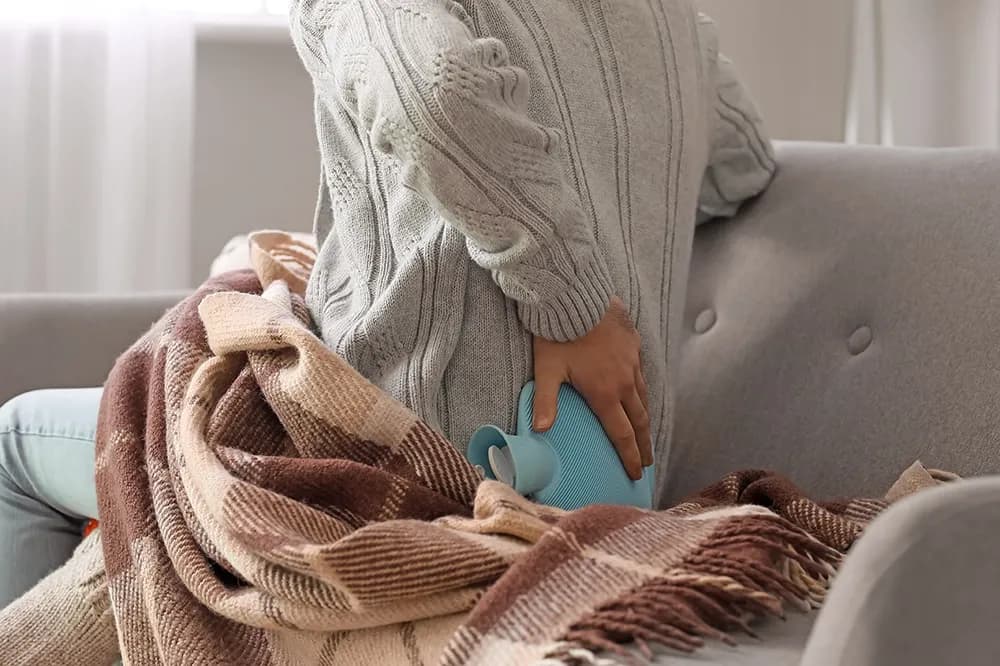Acute, sub-acute and chronic low back pain
Low back pain is pain in the lower back. It is classified as acute, sub-acute or chronic depending on its duration. Each of these stages requires specific treatment.
A distinction is made between common lower back pain and ‘specific’ lower back pain, which is the result of an illness (tumour, fracture, infection). If the back pain heals in less than 4 to 6 weeks, the lower back pain is said to be ‘acute’. If the pain persists for longer than this and up to 12 weeks, it is called ‘subacute’ low back pain. After 12 weeks, it becomes ‘chronic’ (1).
Acute low back pain (acute attack of low back pain): definition and screening
Common low back pain is pain felt in the lower back, the origin of which is often not identified and which has no warning signs (3). It may radiate into one or both legs, in which case it is known as lumbosciatica. It can also lead to severe limitation of movement. However, it is considered commonplace: 4 out of 5 people will experience at least one episode of low back pain in their lifetime (2).
In 9 out of 10 cases, the pain disappears in less than a month (or six weeks). This is known as ‘acute low back pain’. It is important to note that in its latest recommendations, the French National Authority for Health (HAS) has preferred the term ‘acute attack of low back pain’ to ‘acute low back pain’ (3).
From the very first days, it is vital to manage the pain in order to feel better. The treatment of acute low back pain is based around 3 objectives: relieving the pain (by applying heat or cold, stretching, painkillers), strengthening the back muscles (by keeping as physically active as possible), and limiting the number of relapses (by practising sport and adopting the right postures). In short: ‘the right treatment is movement’ (2)!
Sub-acute lumbago: the second stage of lumbago
When pain persists for more than 4 to 6 weeks, and up to 12 weeks, it is termed ‘subacute low back pain’. It affects around 3% of patients (1). Particular attention must be paid to this stage, as it is a pivotal period between a rapid recovery and a transition to chronicity. Over time, new psychosocial risks emerge. These have been described for many years and are taken up by the HAS in its latest recommendations. They include emotional problems (depression, anxiety, stress), fear reactions leading to avoidance of risky situations and reduced activity, and problems linked to professional activity (3), which may in some cases be affected (workstation adaptation or even work stoppage).
Initial treatment must therefore be adapted and/or reinforced. The doctor will begin by adjusting and possibly reinforcing the medication. He will also advise the patient on appropriate activities and behaviours to cope with the pain. Active physiotherapy may be indicated to treat the pain, and to learn the correct movements and postures, so as to avoid chronicity of the lower back pain (3).
Close to the concept of ‘sub-acute low back pain’, the HAS has introduced in its latest recommendations the concept of ‘low back pain at risk of becoming chronic’. This refers to low back pain that has been evolving for less than 3 months, with a high risk of not resolving.
Chronic low back pain
After 3 months (or 12 weeks) of pain, low back pain is said to be ‘chronic’. This is the most advanced stage of common low back pain. However, chronic low back pain is rare: only 2 to 7% of acute low back pain becomes chronic (1). At this stage, the severe limitation of mobility can lead to high levels of stress, poor-quality sleep, anxiety-depression, etc., thereby increasing the intensity of the pain felt. In short, there is a risk of the patient falling into a vicious circle.
In such cases, multidisciplinary treatment is essential. Imaging tests may be carried out depending on the case, and an in-depth assessment may be carried out by a specialist (specialist GP, orthopaedist, rheumatologist, rehabilitation doctor, etc.) to identify any factors that may have contributed to the onset of chronicity and to coordinate treatment. Specialists from a variety of disciplines may also be called in: physiotherapist, occupational therapist, psychiatrist or psychologist, ergonomist (to improve the working environment), social worker, etc. (3).
For the most severe cases, there are centres specialising in intensive multidisciplinary treatment programmes, bringing together all these specialities. The patient will then receive daily, tailored treatment over a period of several weeks (3).
At the end of the day, it's important to remember that while back pain can be impressive, it is very rarely serious and can in most cases be resolved if you take good care of your back, particularly through physical activity.


